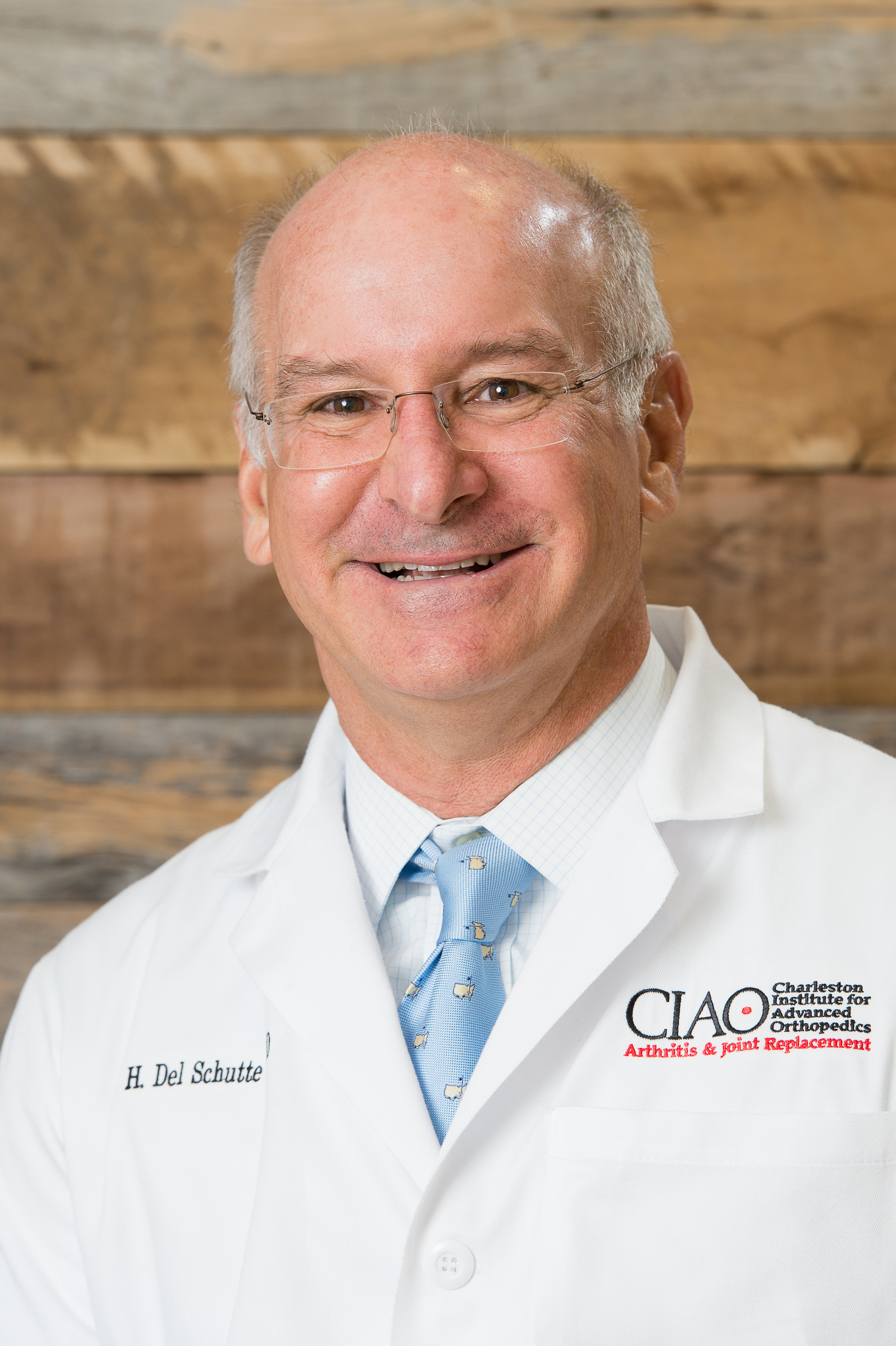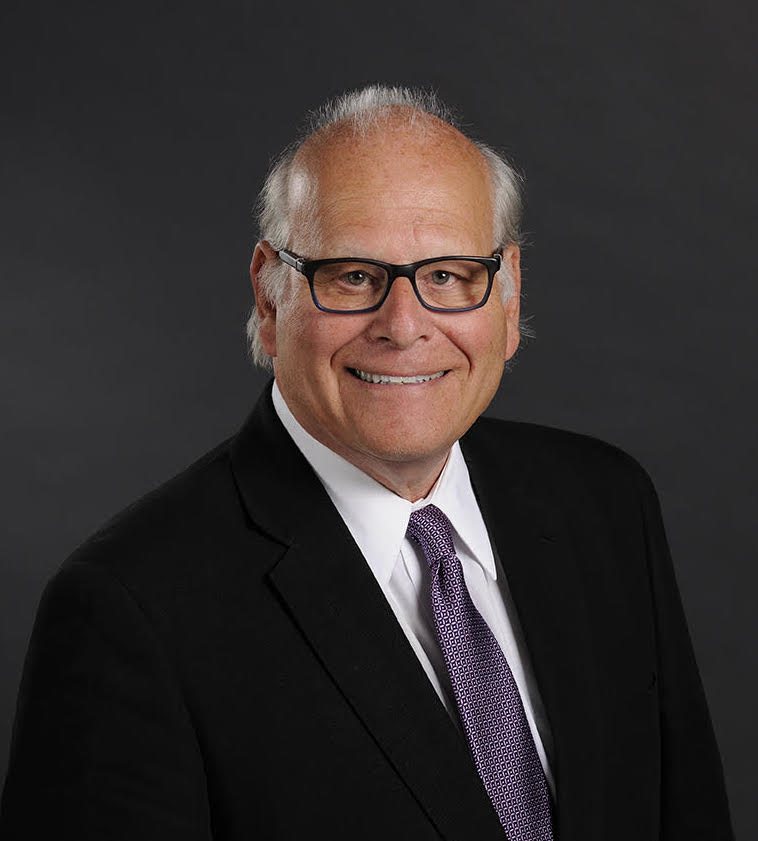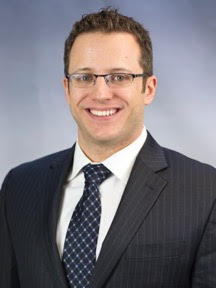While many advancements in outpatient total hip and knee replacement have been implemented in surgery centers across the country, physicians have differing opinions on the effectiveness and practicality of such methods. Below are eight orthopedic surgeons discussing the biggest innovations in outpatient joint replacement, as well as where they think outpatient joint replacement will be in the future.
Q: What is the biggest innovation in outpatient joint replacement?

Benjamin Domb, MD, of Hinsdale (Ill.,) Orthopaedics: Robotic joint replacement is the biggest innovation in outpatient total joint replacement. Current studies show non-robotic replacements result in more than 50 percent of joints being inaccurately placed. With robotics, we can be 100 percent accurate. Robotics have taken surgery from being an operation done by the human hand, subject to human error, to being a much more precise procedure done with the aid of computerized three dimensional planning and robotic precision. It is a complete game-changer, in terms of accuracy and enhanced speed of recovery.
H. Del Schutte Jr., MD, of East Cooper Medical Center in Mt. Pleasant, S.C.: I believethe greatest  advance in facilitating outpatient total joint surgery is anesthesia and pain and nausea control in a manner that allows early ambulation. Other important factors include an emphasis on patient selection and the ability to present patients with a much more comprehensiblebilling program.
advance in facilitating outpatient total joint surgery is anesthesia and pain and nausea control in a manner that allows early ambulation. Other important factors include an emphasis on patient selection and the ability to present patients with a much more comprehensiblebilling program.
The data on different surgical approaches do not show a night and day difference in recovery. Clearly, patient selection is a big deal and anesthetic protocol that allows people to ambulate early without significant pain over the first two to three days in an outpatient setting is in my view what makes outpatient replacements possible. There's an increase on adductor canal blocks and various other methods that control sensory more than motor.
The local anesthetics, various cocktails, the Exparel, all of those are attempts to control pain without affecting that motor function. These are techniques that seem to make the greatest differences in the perioperative period.
.jpg)
Ralph J. Venuto, MD, FACS, of California Orthopaedic Specialists in Newport Beach, Calif.: A machine called a CPM machine, which is a continuous passive motion machine, which keeps the swelling down and helps regain the range of motion after surgery. CPM has been around a long time, so it has been used in TKR in a long time, but the combination of that plus the ability to prescribe medication to control pain, and add to that some preventative measures for blood clots in the leg, with a compression device that is put on the calves. You are really looking at the ability to do these as outpatient now.
Steven F. Harwin, MD, FACS, Chief of Adult Reconstruction and Total Joint Replacement at Mount  Sinai Beth Israel in New York City: Arguably, the most important advance that has allowed outpatient joint replacement is the development of multi-modal pain control programs. These protocols include measures beginning before surgery (the use of pre-emptive non-steroidal anti-inflammatory and other medications), during the operation (regional anesthesia, less invasive surgery, peri-articular cocktails), after the operation (aggressive physical therapy, cryotherapy) and after discharge (longer acting analgesics, steroids and newer drugs to reduce nerve pain).
Sinai Beth Israel in New York City: Arguably, the most important advance that has allowed outpatient joint replacement is the development of multi-modal pain control programs. These protocols include measures beginning before surgery (the use of pre-emptive non-steroidal anti-inflammatory and other medications), during the operation (regional anesthesia, less invasive surgery, peri-articular cocktails), after the operation (aggressive physical therapy, cryotherapy) and after discharge (longer acting analgesics, steroids and newer drugs to reduce nerve pain).
The combined use of these modalities allow for adequate pain control that in the past could only be done in a hospital setting with intravenous administration of medications. Proper patient selection is key.
Peter Gleiberman, MD, of Gleiberman Orthopedics in Torrance, Calif.: I believe that there are two major reasons why we could now do outpatient total joint replacement.
The two main reasons that we had previously for maintaining patients in the hospital were the associated blood loss with surgery as well as difficulty in controlling postoperative pain. The issue of blood loss is currently being addressed with medication such as tranexamic acidwhich greatly decreases blood loss as well as with custom knee arthroplasty (Conformis Custom Total Knee) which also decreases blood loss because we don't have to enter the femoral canal which causes increased blood loss.
Pain control is now much better control with nerve blocks as well as the use of Xparel, which is available in the outpatient surgery center but has not yet been put on formulary at any of the major hospitals. I think that we are already moving towards doing a large percentage of total joint arthroplasties in the outpatient surgery center. I recently gave a talk at the International Congress for Joint Reconstruction last year and this is a very hot topic.
 Jonathan Vigdorchik,Associate Fellowship Director, Joint Preservation and Arthritis Center and Assistant Professor of Orthopaedic Surgery at NYU - Hospital for Joint Diseases: I think the biggest innovations in outpatient joint replacement are pain management and minimally invasive surgical techniques. We now use multi-modal analgesia, meaning we use several different types of medications which act on different parts of the pain pathway as well as a new type of pain relief injection called Exparel which can last up to this days. This has significantly benefited patients and the pain control after surgery requiring less narcotic use and the ability to go home same day.
Jonathan Vigdorchik,Associate Fellowship Director, Joint Preservation and Arthritis Center and Assistant Professor of Orthopaedic Surgery at NYU - Hospital for Joint Diseases: I think the biggest innovations in outpatient joint replacement are pain management and minimally invasive surgical techniques. We now use multi-modal analgesia, meaning we use several different types of medications which act on different parts of the pain pathway as well as a new type of pain relief injection called Exparel which can last up to this days. This has significantly benefited patients and the pain control after surgery requiring less narcotic use and the ability to go home same day.
Combine this with minimally invasive surgical techniques in hip replacement, such as direct anterior or minimally invasive posterior approaches, which have both been proven to be more friendly to the soft tissues and both show the ability for same day discharge. Additionally, the advent of robotic assisted partial knee replacement and robotic hip replacement allow the implants to be placed in a more reproducible way and with less damage to the surrounding tissues. 
Richard Buch, MD, The Dallas Limb Restoration Center in Planto, Texas:
The biggest innovation in outpatient joint replacement is how we can now minimize surgeries. We control pain with new programs and can decrease complications to a minimum. This allows us to get patients up the same day of surgery allowing them to recover quickly. Two essential elements to this process are patients must be educated on what to expect after surgery and a team in the hospital that is dedicated to the process. If these criteria are met the majority of patients can go home within 24 hours of surgery.
.jpg) Stephen Kayiaros, MD, University Orthopedic Associates in Somerset, N.J.: More and more, I am performing total joint replacement procedures in outpatient settings. One factor enabling that is effective postoperative pain management techniques. Methods for controlling pain have certainly come a long way in the past five to 10 years. Effective non-opioid pain management solutions have been a game-changer in terms of how I reduce and control my patients' postoperative pain levels.
Stephen Kayiaros, MD, University Orthopedic Associates in Somerset, N.J.: More and more, I am performing total joint replacement procedures in outpatient settings. One factor enabling that is effective postoperative pain management techniques. Methods for controlling pain have certainly come a long way in the past five to 10 years. Effective non-opioid pain management solutions have been a game-changer in terms of how I reduce and control my patients' postoperative pain levels.
Typically, patients receiving these types of procedures required strong narcotics to recover, causing intense side effects such as nausea, drowsiness and constipation, and prolonging the length of hospital stay. My patients get adductor canal blocks with Halyard Health's ON-Q* Pain Relief System.
Q: Where do you see joint replacement surgeons being successful in five years?
BD: Outpatient joint replacement performed with minimally invasive robotic technique, allowing the implants to be personalized to the patient. We've basically improved our ability to understand a patient's individualized anatomy and reproduce it using robotics. Some of the problems were solved in the last generation were things like dislocation. I think dislocation is no longer a major problem, but the bar is higher today.
We can do better than just not dislocating it. We can do better than just the hip surviving. Now the bar is a functional outcome. This for me is a bit of a leap forward. Where I set the bar for success, is 'does the patient feel like this is a normal hip?' In measuring our outcomes, we use a scoring system called the Forgotten Joint Score, a much more sensitive scoring system than previous outcome measures.
In previous outcomes measures, does the patient use a cane or a walker? If they don't that is a success. I want to shoot higher than that. The Forgotten Joint Score allows the patient to give us feedback as to if the replacement feels like a normal joint.
HS: In the future, there may be advances [in anesthesia] but the same principles are still going to apply, which is being able to control pain without effecting motor function of the extremity or bowel and bladder function. In terms of the data affecting procedures in the future, a lot of the data have been considered to have significant selection bias.
For example, a lot of hip resurfacing data shows people are more active, more functional, but in many studies, the patients that had resurfacing were younger active patients to start with, so it was unrealistic to compare hip resurfacing patients to patients who had routine total joints when there is certainly a reasonable amount of data that showed hip resurfacing patients had less range of motions, bigger incisions, higher complication rates. The fact that you could take 100 patients and have them do better may be as much a selection bias as any inherent advantage in the technique. Pt. selection and patient preparation will continue to have a significant role in facilitating outpatient joint replacement. The ability to adequately manage the data so that comorbidities are adequately accounted for ahead of time will be crucial. Technically the bar is really high in terms of fixation, wear and increasingly perioperative complications such as dvt/pe and infection. Comprehensible financial packages such as bundled payment programs will greatly facilitate the process for both patients, insurers, and physicians if managed correctly.
RV: There are some really distinct advantages to outpatient surgery, and I think more and more that will be done over time. I think what is going to drive it is economics. Cost control is going to drive knee replacements to outpatient. There is another in-between called a 24-hour stay. Most outpatient centers have the ability to keep the patient over night with skilled nursing care. They do the surgery, there a nurse there that stays the evening, and the next morning, and you discharge them. This again, is a cost savings.
SH: Advances in implant technology can now allow for a biological (cementless) fixation to bone. This can potentially provide life-long stable fixation. Newer highly cross-linked polyethylene and ceramic bearings resist wear and maintain strength. These innovations combine to reduce the incidence these common failure modes.
The future also lies in the promise of robotic assisted surgery. While the thought of a robot 'doing' surgery may be off-putting to some, we need to educate our patients about exactly what the technology involves. It is analogous to the way that the aviation industry has evolved. In the past pilots would manually fly a plane having to determine exactly where they were and what adjustments had to be made moment to moment. Now all modern aircraft have sophisticated computer systems that instantaneously make these decisions and determinations, but the pilot oversees the computer. He remains the "captain of the ship."
With robotic surgery, precise preoperative planning maps out our "flight plan" and the robot assists us during the procedure to have a smooth, safe flight and most importantly, a perfect landing. As surgeons we strive to standardize our surgical procedures and yet we have to modify our technique to each individual patient. Robot-assisted surgery allows us to accomplish both standardization and individualization by providing precise placement, alignment and accuracy for each unique patient.
There will be hurdles for full adoption of this technology, including cost, surgeon and patient education and the need to advance the technology to make it easy for surgeons to transition from traditional surgery. However I believe in five to 10 years this will be "standard operating procedure."
PG: I think that we are already moving towards doing a large percentage of total joint arthroplasties in the outpatient surgery center. I recently gave a talk at the international conference for joint reconstruction last year and this is a very hot topic. It also received significant attention at this year's orthopedic annual convention so more doctors are becoming interested in how it can enter their practice patterns.
I do believe that with careful patient's selection, it should be quite successful. In my experience outpatient patients have been delighted they have no pain to go home the next day and avoid the hassles of being hospitalized.
JV: In the next five years, we will continue to build on robotic or computer assisted technology in joint replacements allowing us the ability to improve patient outcomes through more efficient, properly performed surgery. The biggest growth will actually be in preserving joints. Joint preservation surgery of the hip has allowed us to prevent arthritis in some patients, and eliminate the need for joint replacement in those patients.
Research like what we do at our Joint Preservation and Arthritis Center, analyzing fluid samples from knees and hips will allow us to properly choose patients for joint preservation surgery or joint replacement and will help doctors achieve the best outcomes.
RB: We are now fine-tuning custom-made prostheses that fit a patient's anatomy perfectly, matching the anatomy they were born with. This technology allows patients to have implants that feel like their normal knee or hip. This had not been possible because implants have been created in predetermined sizes requiring the surgeon to select the closest match and shape the bone to the implant. This process changes the normal anatomy and results in 25 percent of people not trusting the knee or hip. In the next five years this new 3D technology will be used regularly to create custom prostheses for each patient.
SK: I've found that patients who take less narcotics experience less pain and can ambulate more quickly. For patients undergoing total joint replacement surgery, I employ a multimodal approach to pain. I typically use ON-Q* in addition to oral anti-inflammatories. The pump allows my patients to take less narcotics and create a seamless transition between medications.
But, the fact of the matter is, postoperative pain management is more of an art than a science. I am constantly evolving my practice and honing in on the best possible medication combinations for each of my patients. In the coming years, I see joint replacement surgeons advancing this art of pain management and building upon the strategies that we currently employ to mitigate postoperative pain.

